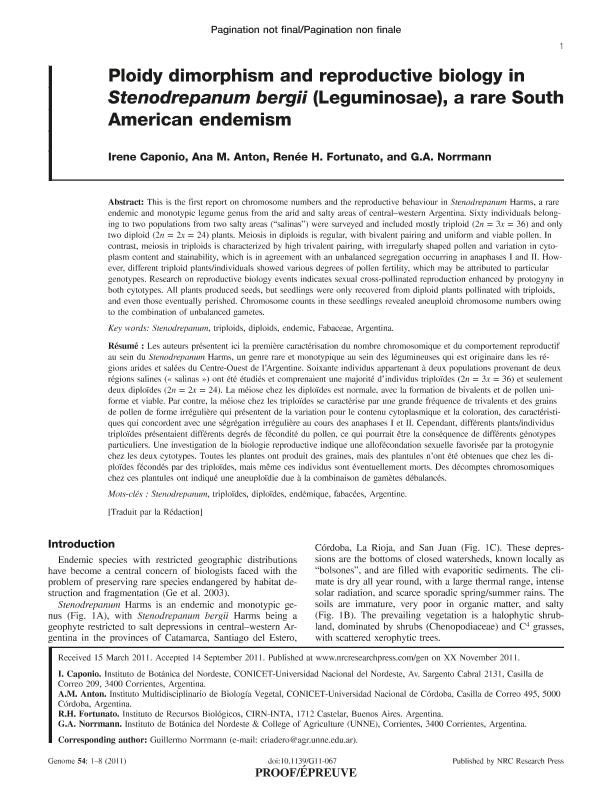Artículo
Ploidy dimorphism and reproductive biology in Stenodrepanum bergii (Leguminosae), a rare South American endemism
Fecha de publicación:
12/2011
Editorial:
Natl Research Council Canada-n R C Research Press
Revista:
Genome
ISSN:
0831-2796
Idioma:
Inglés
Tipo de recurso:
Artículo publicado
Clasificación temática:
Resumen
This is the first report on chromosome numbers and the reproductive behaviour in Stenodrepanum Harms, a rare endemic and monotypic legume genus from the arid and salty areas of central–western Argentina. Sixty individuals belonging to two populations from two salty areas (“salinas”) were surveyed and included mostly triploid (2n = 3x = 36) and only two diploid (2n = 2x = 24) plants. Meiosis in diploids is regular, with bivalent pairing and uniform and viable pollen. In contrast, meiosis in triploids is characterized by high trivalent pairing, with irregularly shaped pollen and variation in cytoplasm content and stainability, which is in agreement with an unbalanced segregation occurring in anaphases I and II. However, different triploid plants/individuals showed various degrees of pollen fertility, which may be attributed to particular genotypes. Research on reproductive biology events indicates sexual cross-pollinated reproduction enhanced by protogyny in both cytotypes. All plants produced seeds, but seedlings were only recovered from diploid plants pollinated with triploids, and even those eventually perished. Chromosome counts in these seedlings revealed aneuploid chromosome numbers owing to the combination of unbalanced gametes.
Palabras clave:
Stenodrepanum.
,
Fabaceae
,
Triploids, Diploids
,
Endemic
Archivos asociados
Licencia
Identificadores
URL:
http://goo.gl/Yh0PQm
Colecciones
Articulos(IBONE)
Articulos de INST.DE BOTANICA DEL NORDESTE (I)
Articulos de INST.DE BOTANICA DEL NORDESTE (I)
Articulos(SEDE CENTRAL)
Articulos de SEDE CENTRAL
Articulos de SEDE CENTRAL
Citación
Caponio, I.; Anton, Ana Maria Ramona; Fortunato, Renee Hersilia; Norrmann, Guillermo Alberto; Ploidy dimorphism and reproductive biology in Stenodrepanum bergii (Leguminosae), a rare South American endemism; Natl Research Council Canada-n R C Research Press; Genome; 55; 1; 12-2011; 1-7
Compartir
Altmétricas




